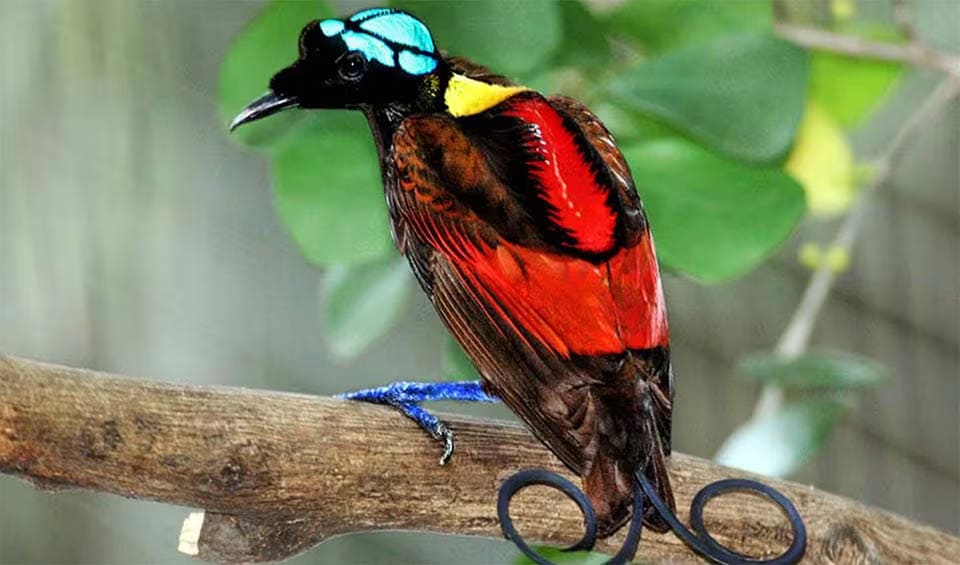A small but remarkably vibrant bird that dwells in the lush rainforests of Indonesia, particularly on the islands of Waigeo and Batanta in the Raja Ampat archipelago. This species is renowned for its extraordinary beauty and complex courtship behaviors, making it one of the most striking examples of avian evolution.
The male Wilson’s bird-of-paradise is especially notable for its vivid coloration and intricate feather arrangements. It sports a rich, velvety combination of colors: its back and wings are a deep green, and its belly is a bright red. One of the most distinctive features is its bald head, which is a light turquoise blue with a pattern of black feather lines that resemble a helmet. Adding to its dramatic look are the long, curved yellow and blue tail feathers that cascade behind it, and a pair of green-tufted feather ornaments that rise behind its back, creating a visually arresting display.
Females, while less colorful, possess a subtle beauty with mostly brownish plumage that allows them to blend into the forest canopy, an advantageous trait for avoiding predators while nesting. Despite their more subdued appearance, the critical role females play in the continuation of the species makes them just as significant.
Wilson’s bird-of-paradise is renowned for its complex mating ritual, which is a sight to behold. The male clears a patch of forest floor to create a stage for his performance, meticulously removing leaves and debris to expose the bare earth, which contrasts with his vibrant plumage. He then performs a dance that involves bobbing, hopping, and flaunting his feathers while making a series of chirps, whistles, and other sounds to attract a mate. This dance not only showcases his physical attributes but also his strength and vitality, traits that are crucial for attracting a female.
Distribution
 Indonesia
Indonesia Official estimate
Official estimate
Anything we've missed?
Help us improve this page by suggesting edits. Glory never dies!
Suggest an editGet to know me
Terrestrial / Aquatic
Altricial / Precocial
Polygamous / Monogamous
Dimorphic (size) / Monomorphic
Active: Diurnal / Nocturnal
Social behavior: Solitary / Pack / Herd
Diet: Carnivore / Frugivore / Omnivore / Piscivorous / Insectivore
Migratory: Yes / No
Domesticated: Yes / No
Dangerous: Yes / No




